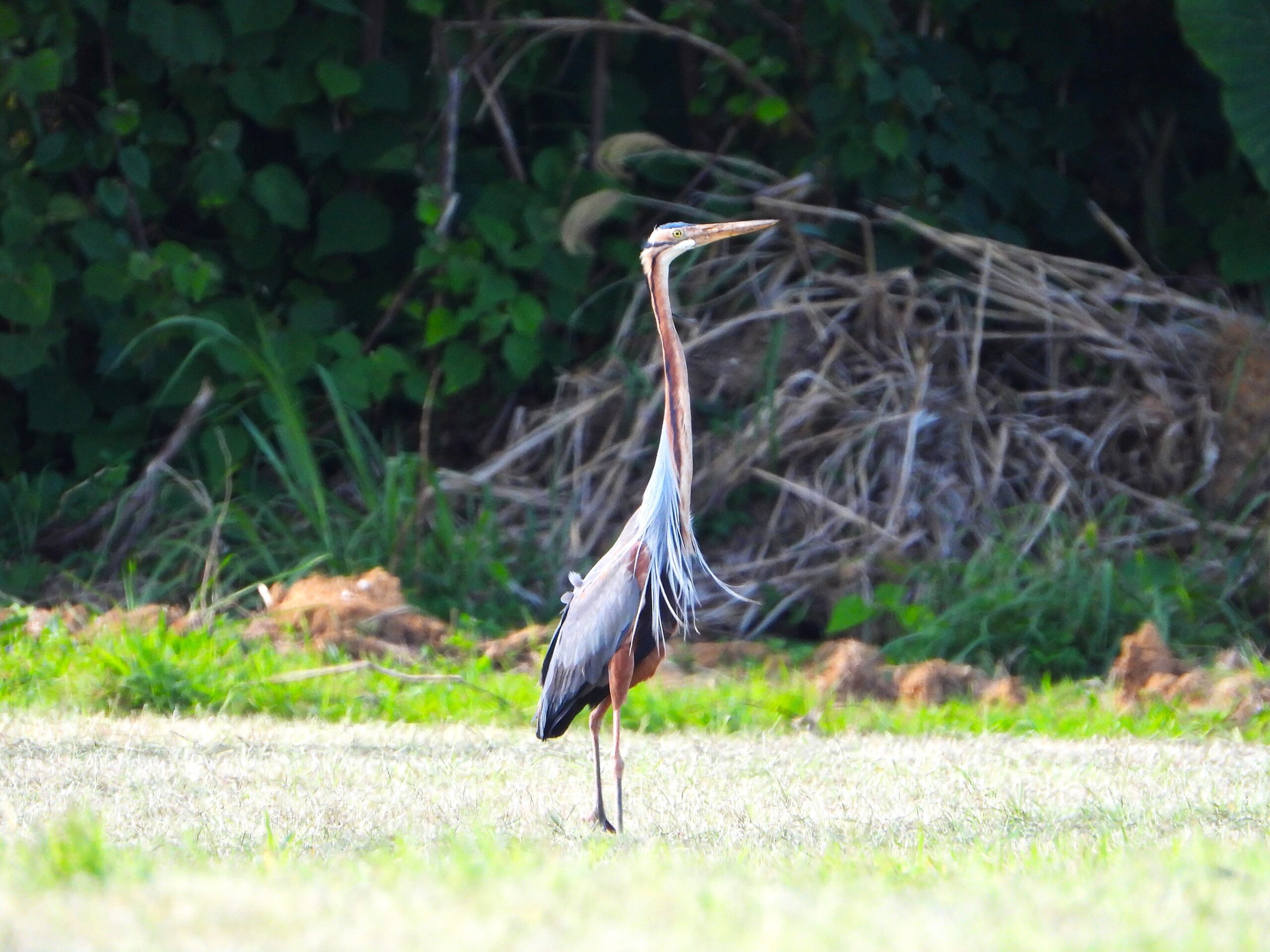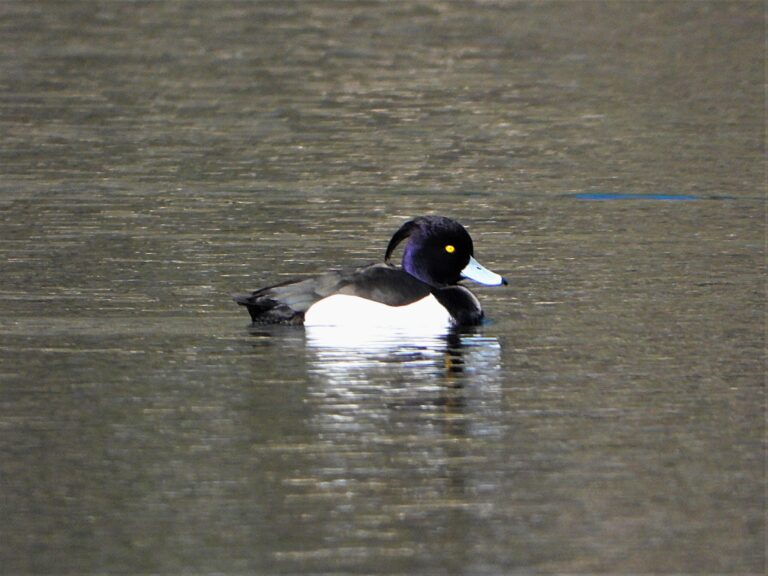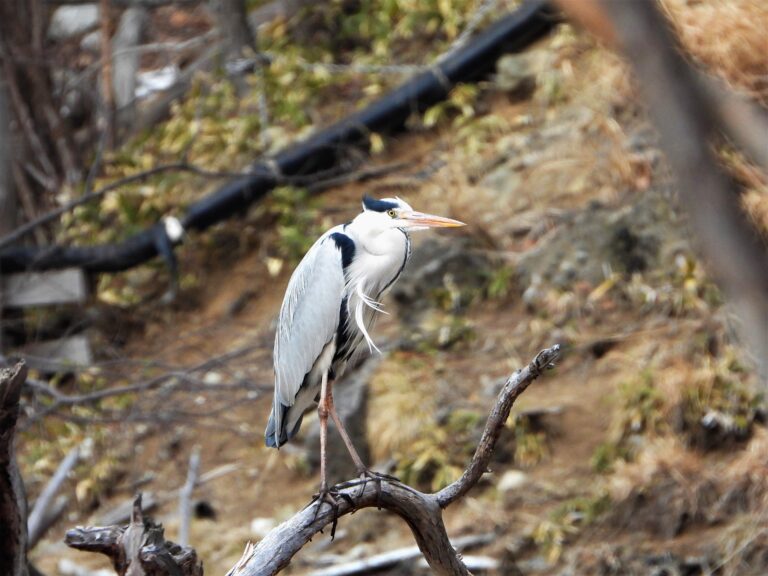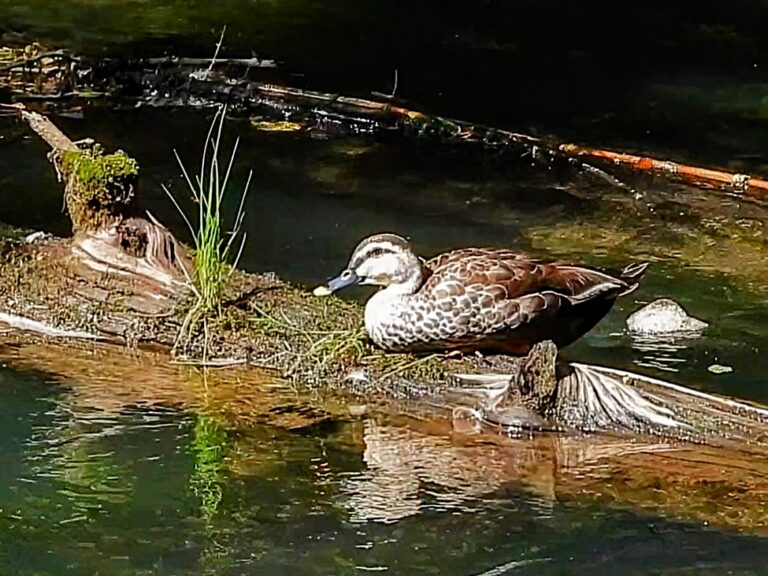Purple Heron (Ardea purpurea) – Wildlife of Japan
Introduction
The Purple Heron is a slender, secretive heron found mainly in southern Japan, especially around the Yaeyama and Miyako Islands of Okinawa Prefecture. It is far less common than the widespread Grey Heron. With its purplish plumage and preference for quiet reedbeds, it represents one of Japan’s more elusive wetland birds.
Appearance
The species measures about 78–90 cm in length with a wingspan of roughly 120–150 cm.
Adults have a purplish-grey body, reddish-brown neck with dark vertical streaks, and a dark crown with fine crest feathers. The underparts are greyish, and the wings show a subtle violet-brown tone in good light.
Juveniles are paler brown and lack the elongated neck plumes.
When flying, the Purple Heron retracts its neck, giving it a slim, elegant outline compared to the bulkier Grey Heron.
Habitat & Distribution
Habitat
The species inhabits wetlands with dense vegetation—reedbeds, marshes, mangroves, and quiet rice-field margins. It prefers areas with shallow water and cover, avoiding open lakeshores.
Distribution in Japan
In Japan, the subspecies Ardea purpurea manilensis occurs. It is resident only in the Sakishima Islands (mainly Ishigaki, Iriomote, and Miyako) of Okinawa Prefecture. On the main islands (Honshu, Shikoku, Kyushu, and Hokkaido), it appears only as a very rare visitor recorded occasionally by birdwatchers.
Where to See in Japan
Your best chance of observing this species is in Ishigaki and Iriomote Islands, where it forages in reedbeds and mangroves. It can also sometimes be seen around Miyako Island’s wetlands. Elsewhere in Japan, sightings are extremely scarce and irregular, so treat mainland encounters as exceptional.
Behavior
The Purple Heron is notably shy and prefers to remain hidden within dense reeds. It hunts slowly and carefully, striking at fish or frogs with lightning speed. Its long toes help it balance on floating vegetation. It is most active at dawn and dusk, spending much of the day resting or standing motionless among tall grasses.
Diet
This species feeds mainly on fish, frogs, and aquatic insects, but will also take small reptiles or rodents when available. It typically hunts alone in shallow water or the edges of rice fields.
Reproduction
Breeding occurs only in Okinawa Prefecture, where the species builds nests of reeds or sticks in tall wetland vegetation. Clutches usually contain 3–5 eggs. Confirmed nesting has been recorded on Ishigaki, Iriomote, and Ikema Islands. There are no breeding records from mainland Japan.
Conservation
Globally, the Purple Heron is listed as Least Concern (IUCN), but populations are decreasing because of wetland loss. In Japan, it is classified as Vulnerable on the Okinawa Red List, since suitable wetland habitats are limited and declining. Main threats include wetland reclamation, disturbance near nesting sites, and reduction of reedbed areas.
Author’s Impression
I encountered a Purple Heron while driving through the rural landscape of Ishigaki Island. Its dignified presence stood out among the fields, a rare sight even in Okinawa. Among Japan’s herons, the Purple Heron is one of the hardest to find.
The key to observing it is patience—scan the edges of rice fields and reedbeds slowly, especially early in the morning or near sunset, when it becomes more active yet still cautious.







